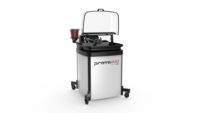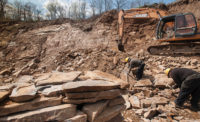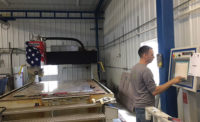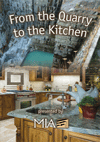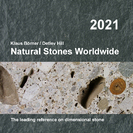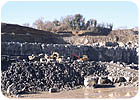
In 1925, Giuseppe Tecchi Cristofori Celiani purchased several small quarries from local craftsmen and united them to form Basaltina Srl. Today, the company's quarrying site spans 600,000 square meters, and it is a leading source of Basaltina®, a light gray basalt that is dense, uniform, frost resistant and durable.
Located just outside the village of Bagnoregio in the Lazio region of Italy, the basalt quarries owned by Basaltina Srl cover 600,000 square meters. The company has been in business since 1925, when Giuseppe Tecchi Cristofori Celiani purchased several small quarries in the area from local craftsmen and joined them together to form one operation. Today, Basaltina remains a family business, producing approximately 2 million square feet of basalt per year for a worldwide market.
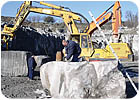
Plugs, wedges and feathers are used to split blocks.

Workers strike in a rhythmic way so that the block splits evenly.
The quarries
The site where Basaltina is quarried is the result of a large lava flow that covered the land years ago. Basaltina Srl employs 75 workers, including a staff at its head office in Rome and 50 people at the quarrying location. The company also operates two factories near Ascoli Piceno.“Basaltina is one of the top three producing quarries in Italy,†said John Donatelli, a sales representative with the company. “It's very large. The [company's] three quarries all work at the same time.â€

On average, the size of the blocks range from about five to 20 tons. “Everything has been studied for years to maximize quarrying efficiency,†said Donatelli. Once the blocks are split, they are brought to an on-site saw mill to be squared off with a BM monoblade saw. The sawmill is also equipped with several gangsaws.

On average, the size of the blocks range from about five to 20 tons.
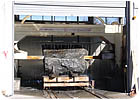
Once the blocks are split, they are brought to an on-site sawmill where they are squared off with a BM monoblade saw.
A custom-made product
With the exception of the company's premium product, all of the basalt is filled with resin. “It is a highly acid-resistant stone and very slip resistant,†said Donatelli. “It does have porosity, but all basalts do. With sealers, this is not a problem.â€While original uses for Basaltina included paving and sidewalks, now the lava stone is ideal for most applications, according to the company. “You can use the stone from paving to countertops,†said Donatelli, adding that the material is priced from moderate to moderately high. “We do everything for order here. There is no inventory. Anything that can be thought of to be done with stone, we can do.â€
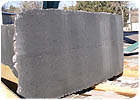
Slabs can be produced as large as 5 feet, 6 inches x 10 feet long.
Thicknesses of slabs can vary from 1 cm to custom-made sizes. The facility in Bagnoregio also includes a Breton tile line. All tiles are calibrated for size and thickness, according to Donatelli. “More specialized cut-to-size [pieces] are done at this operation,†he said.

